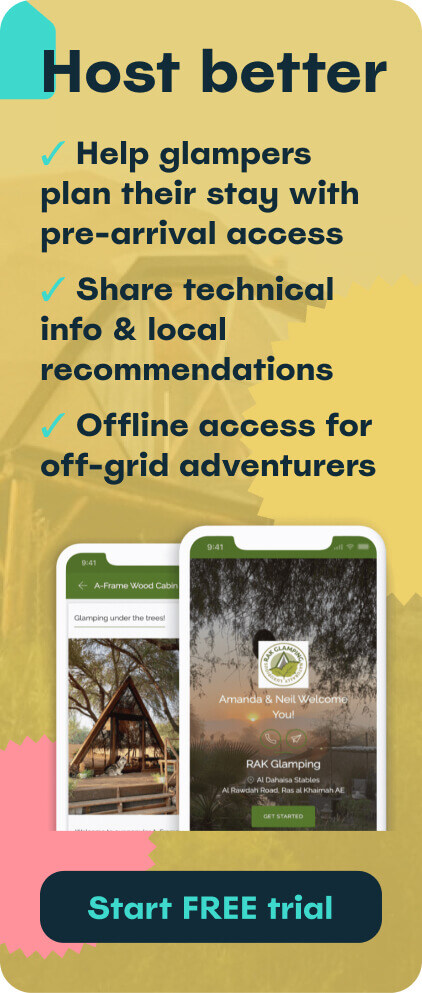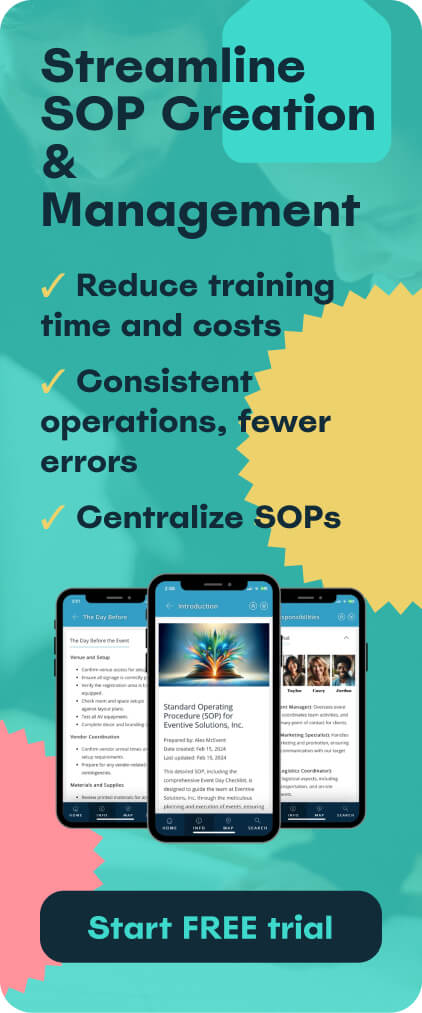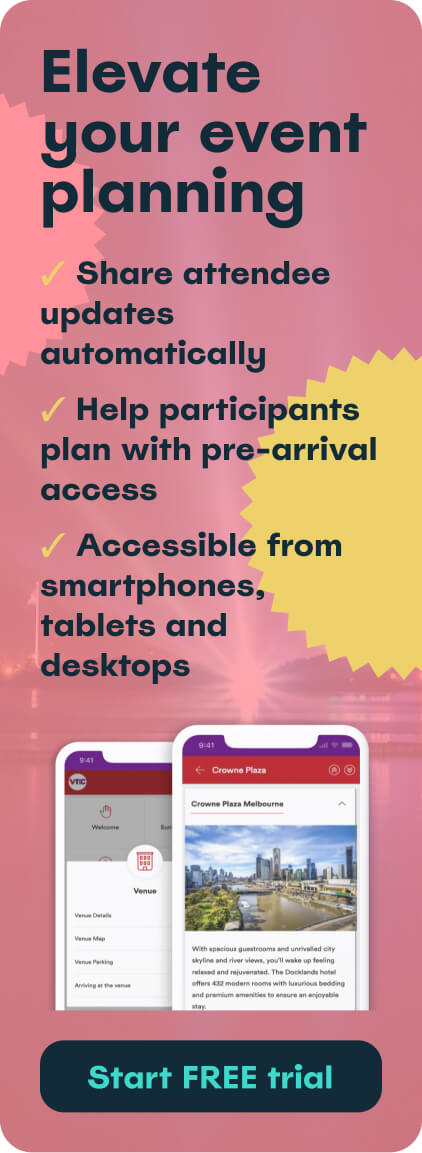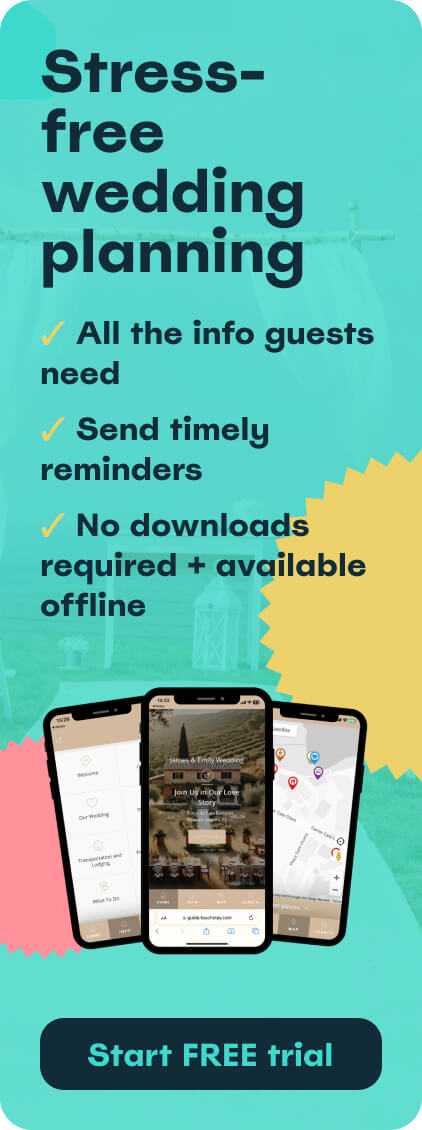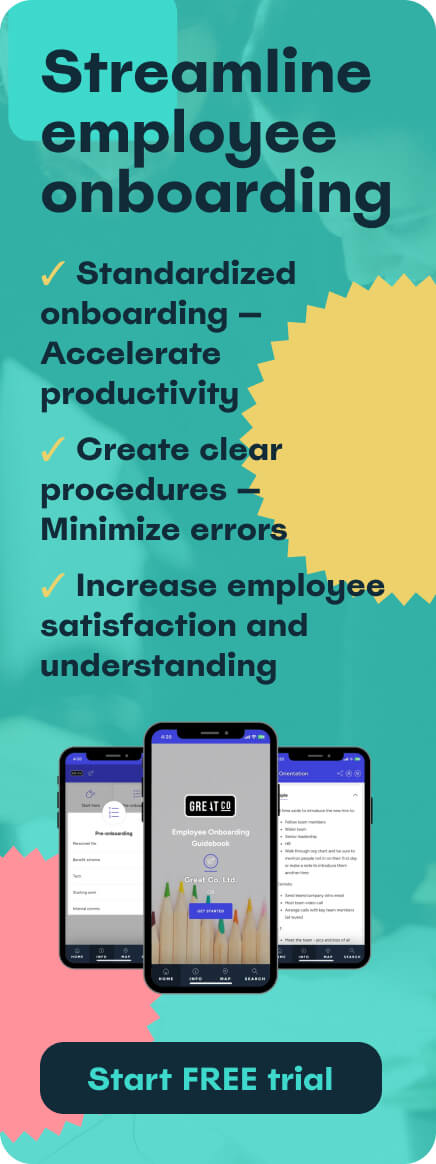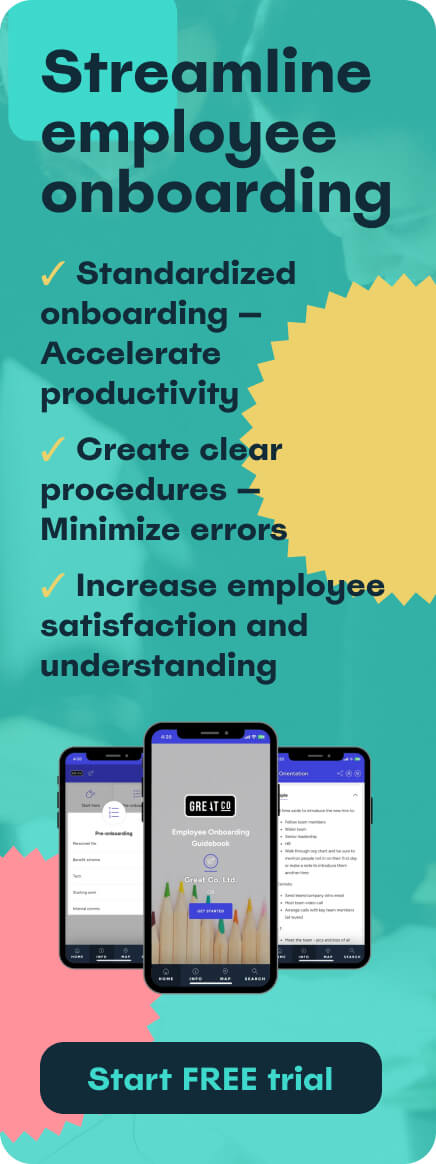Are you dreaming of starting your own outdoor hospitality business? This comprehensive guide will walk you through the essential steps to open a campground or RV park, whether you're in the United States, the United Kingdom, or continental Europe. From conducting market research to planning your grand opening, we'll cover everything you need to know to turn your vision into reality across these diverse markets - plus, we’ll explain why you and your guests benefit from using a digital guidebook.
- Market research: understanding your audience and competition
- Business planning: defining your vision and financials
- Securing financing: funding your campground dream
- Location selection: finding the perfect spot
- Permits and licences: navigating regulations
- Campground design: creating an appealing layout
- Sustainability practices: eco-friendly camping
- Staffing and training: building your team
- Marketing strategies: attracting campers
- Launch and operations: from opening day onwards
The outdoor recreation industry has been experiencing significant growth in recent years, with camping and RVing becoming increasingly popular worldwide. This trend has created exciting opportunities for entrepreneurs looking to enter the campground and RV park business. Let's take a look at the recent growth in outdoor recreation across these regions:
Source: Statista
Now that we've seen the potential in these markets, let's dive into the steps you need to take to open your own campground or RV park, with considerations for each region.
Step 1: Conduct market research
Before investing time and money into your campground or RV park, it's crucial to understand your market. This research will help you make informed decisions and increase your chances of success.
Identify your target audience
Different types of campers have different needs and preferences. Consider which groups you want to cater to:
- Families with children
- Adventure seekers and outdoor enthusiasts
- RV travellers (or caravanners in the UK)
- Glamping enthusiasts
- Retirees and snowbirds (in the US) or "grey nomads" (in Europe)
Understanding your target audience will help you design your campground or RV park to meet their specific needs and expectations.
Did you know… 92% of Touch Stay users receive fewer questions from their campers?
A digital guidebook lets campground and RV park owners:
- combine practical info and recommendations in one place
- easily update content in real-time
- set camper expectations with pre-arrival access
- spotlight your brand: include your logo, fonts, colours, etc.
Analyse competitors
Take a close look at existing campgrounds and RV parks in your area:
- Visit their websites and read customer reviews
- If possible, stay at these campgrounds to experience them firsthand
- Note their amenities, pricing, and unique selling points
- Identify gaps in the market that you could fill
This analysis will help you differentiate your offering and learn from both the successes and mistakes of established businesses.
Determine market demand
Use tourism data and industry trends to gauge the potential success of your campground or RV park. Here's a breakdown of camping participation rates across regions:
These figures show a strong interest in camping across North America and Europe, with varying participation rates that can guide your market selection.
Step 2: Develop a solid business plan
A well-crafted business plan is essential for guiding your campground or RV park to success. It will help you clarify your vision, set goals, and attract potential investors or lenders.
Define your campground type
Decide on the type of camping experiences you want to offer:
- Tent sites
- RV hookups (or caravan pitches in the UK)
- Cabins or chalets
- Glamping accommodations (e.g., yurts, pods, treehouses)
- A mix of multiple options
Your choice will impact your target audience, required amenities, and overall investment.
Estimate startup costs and projected revenue
Create a detailed financial projection that includes:
- Land acquisition or lease costs
- Site development expenses
- Infrastructure and utility setup
- Equipment and supplies
- Marketing and advertising budget
- Staffing costs
- Operational expenses
Be realistic in your revenue projections, considering factors like seasonality and occupancy rates. Remember that costs and regulations can vary significantly between the US, UK, and continental Europe.
Business plan examples
Here are some resources for creating a strong campground or RV park business plan:
- Sample Campground Business Plan (US-focussed)
- European Federation of Campingsite Organisations and Holiday Park Associations
Step 3: Secure financing
Once you have a solid business plan, it's time to secure the necessary funding to bring your campground or RV park to life.
Calculate startup and operational costs
Be thorough in your cost calculations, including:
- Land purchase or lease
- Site development and construction
- Utility installations
- Equipment and supplies
- Permits and licences
- Marketing and advertising
- Working capital for the first few months of operation
Explore funding options
Consider various funding sources to finance your campground or RV park:
- Personal savings
- Bank loans (SBA loans in the US, business loans in the UK and Europe)
- Private investors or partners
- Crowdfunding
- Grants for outdoor recreation businesses (varies by country)
For more information on choosing the right financing option, check out these resources:
- US: National Association of RV Parks and Campgrounds (ARVC) Financial Resources
- UK: Gov.uk Business Finance Support Finder
- Europe: European Investment Fund for SMEs
Prepare financial documents
Gather the necessary documentation to support your funding requests:
- Detailed business plan
- Financial projections (3-5 years)
- Personal and business credit history
- Collateral details (if applicable)
- Tax returns and financial statements
Having these documents ready will streamline the financing process and demonstrate your preparedness to potential lenders or investors.
Step 4: Choose the perfect location
The success of your campground or RV park largely depends on its location. Consider the following factors when selecting your site:
Land requirements
- Size: ensure you have enough acreage to accommodate your desired number of sites and amenities.
- Terrain: look for land with a mix of flat areas for campsites and natural features for scenic appeal.
- Natural attractions: proximity to lakes, rivers, forests, or mountains can be a significant draw for campers.
Accessibility and proximity
- Highway access: choose a location that's easy to reach by car or RV/caravan.
- Nearby attractions: consider proximity to national parks, tourist destinations, or urban centres.
- Local amenities: ensure campers have access to grocery stores, fuel stations, and emergency services.
Zoning and land use regulations
Before purchasing or leasing land, verify that it's zoned for commercial recreational use. Contact your local planning department or visit the following resources for zoning information:
- US: USA.gov Zoning Laws and Ordinances
- UK: Gov.uk Planning Permission and Building Regulations
- Europe: Check with your country's specific urban planning or land use authority
Step 5: Obtain necessary permits and licences
Navigating the permitting and licensing process is crucial for legally operating your campground or RV park. Requirements can vary significantly between countries and even regions within countries.
Environmental permits
- Conduct environmental impact assessments
- Obtain water usage and wastewater treatment permits
- Comply with wildlife protection regulations
Building and safety permits
- Secure permits for construction and infrastructure development
- Comply with fire safety and emergency access requirements
- Obtain health department approvals for food service areas (if applicable)
Business Licences
- Register your business with appropriate national and local authorities
- Obtain a general business licence
- Secure any specific licences required for campground or RV park operations
Here's a table of common permits and licences you may need:
Always check with your local and national authorities for specific requirements in your area.
Step 6: Design your campground
Creating an efficient and appealing layout is essential for your campground or RV park's success.
Layout planning
- Design a logical flow for vehicle and foot traffic
- Create a mix of site types (e.g., tent sites, RV/caravan sites, cabins)
- Plan for future expansion
Infrastructure development
- Install electrical hookups for RV/caravan sites
- Develop a water distribution system
- Create an efficient sewage and waste management system
- Plan roads and pathways
Amenities and facilities
- Build clean and accessible toilet blocks and shower facilities
- Create common areas like picnic spots and fire pits
- Develop recreational facilities (e.g., playgrounds, swimming areas, hiking trails)
- Consider adding a camp store or laundry facilities
Step 7: Implement sustainable practices
Incorporating eco-friendly practices can attract environmentally conscious campers and reduce operational costs.
Environmental conservation
- Implement erosion control measures
- Use native plants in landscaping
- Create wildlife corridors and protected areas
Energy efficiency
- Install solar panels for electricity generation
- Use LED lighting throughout the campground
- Implement smart energy management systems
Waste management
- Set up recycling stations throughout the campground
- Use composting toilets where appropriate
- Educate campers on Leave No Trace principles
Touch Stay digital guidebooks include a Making a Difference section that gives guests peace of mind that they’re staying with hosts who care about sustainability. This part of your campground or RV’s guidebook lets you share your cause (or causes), how you work towards your goals and how guests can get involved too.
Step 8: Hire and train staff
Your staff will play a crucial role in creating positive experiences for your campers.
Determine staffing needs
Consider hiring for the following roles:
- General Manager
- Front Desk/Reservation Staff
- Maintenance Personnel
- Housekeeping (for cabins or rental units)
- Activities Coordinator
- Security Personnel
Staff training
Develop a comprehensive training program covering:
- Customer service skills
- Campground policies and procedures
- Safety protocols and emergency procedures
- Local area knowledge and attractions
- Basic maintenance and troubleshooting
Here's a checklist for essential staff training topics:
- Customer service excellence
- Reservation system usage
- Check-in and check-out procedures
- Campground rules and regulations
- Emergency response and first aid
- Basic maintenance skills
- Local area knowledge
- Conflict resolution
- Environmental stewardship practices
Step 9: Marketing your campground
Effective marketing is crucial for attracting campers to your new campground or RV park.
Create a strong online presence
- Develop a user-friendly website with online booking capabilities
- Utilise social media platforms to showcase your campground and engage with potential guests
- List your campground on popular camping and travel websites specific to your region:
- US: ReserveAmerica, Campendium
- UK: Pitchup, Cool Camping
- Europe: ACSI, Eurocampings
Promotional strategies
- Offer early bird specials or off-season discounts
- Partner with local attractions or tour operators
- Develop a loyalty program for returning campers
- Host events or themed weekends to attract specific groups
Customer reviews and testimonials
- Encourage guests to leave reviews on platforms like TripAdvisor, Google, and region-specific camping review sites
- Respond promptly and professionally to all reviews, both positive and negative
- Feature testimonials on your website and marketing materials
For more info, check out our comprehensive guide on how to market your RV.
Step 10: Grand opening and ongoing operations
As you prepare to welcome your first guests, consider these final steps:
Soft launch
- Invite friends, family, or local community members for a trial run
- Test all systems and procedures
- Gather feedback and make necessary adjustments
Continuous improvement
- Regularly solicit guest feedback through surveys or comment cards
- Stay updated on industry trends and new technologies
- Attend campground and RV park industry conferences and workshops
Maintenance and upgrades
- Develop a regular maintenance schedule for all facilities and equipment
- Plan for periodic upgrades to keep your campground attractive and competitive
- Consider adding new amenities or expanding services based on guest feedback and market demand
Conclusion
Opening a campground or RV park can be a rewarding venture, offering you the opportunity to share your love of the outdoors with others while building a successful business. By following these ten steps and staying committed to providing exceptional experiences for your guests, you'll be well on your way to creating a thriving outdoor hospitality destination, whether in the United States, the United Kingdom, or continental Europe.
Next steps
Ready to turn your campground or RV park dreams into reality? Here are some resources to help you get started:
- US: National Association of RV Parks and Campgrounds (ARVC)
- UK: British Holiday & Home Parks Association
- Europe: European Federation of Campingsite Organisations and Holiday Park Associations
Remember, proper planning and research are key to success in this industry. Take your time to develop a solid foundation for your campground or RV park, and don't hesitate to seek advice from industry professionals or mentors along the way.
With dedication, hard work, and a passion for outdoor hospitality, you can create a campground or RV park that provides memorable experiences for years to come. Good luck on your exciting journey into the world of outdoor hospitality!
Create a digital guidebook for your campground or RV park today and start reclaiming precious time!

Ned
Ned has clocked up over 11 years in digital marketing and comms, with a strong focus on creating engaging content for a range of brands and agencies. When he’s not writing, he can be found digging for records, peering through his telescope at the night sky, or onboard his local lifeboat where he volunteers as a crewmember.
Be the first to know!
Join our newsletter for early access to:
- ✅ Free guides
- ✅ Pro tips & tricks
- ✅ Time saving tutorials
- ✅ Latest blog posts
- ✅ Checklists & templates

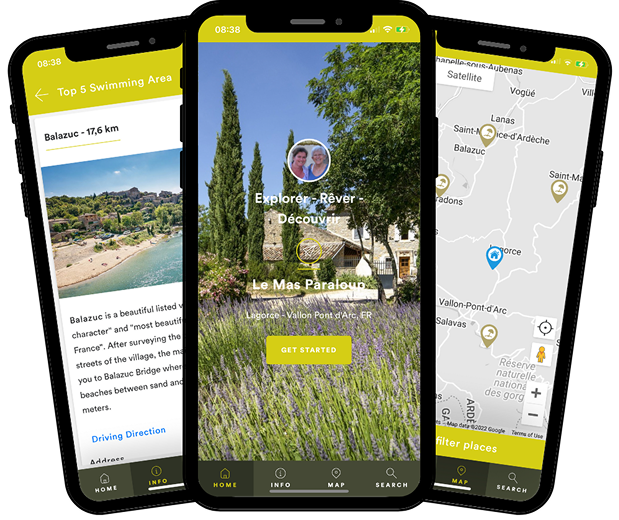
.png?width=50)




